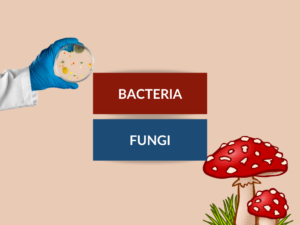Difference Between Plasma Membrane and Cell Wall
Introduction: The plasma membrane and cell wall are two vital components of a cell, but they serve different purposes. In this article, we will explore the characteristics, examples, and uses of both plasma membrane and cell wall while highlighting their key differences.
What is Plasma Membrane?
The plasma membrane, also known as the cell membrane, is a selectively permeable barrier that surrounds the cell. It acts as a protective layer, regulating the movement of substances in and out of the cell.
Examples of Plasma Membrane:
- The plasma membrane of red blood cells
- The plasma membrane of plant cells
Uses of Plasma Membrane:
- Controls the entry and exit of molecules
- Maintains cell shape and structure
- Facilitates cell communication
What is Cell Wall?
The cell wall is a rigid, protective layer that lies outside the plasma membrane. It provides structural support and protection to the cell, maintaining its shape and preventing it from bursting under pressure.
Examples of Cell Wall:
- The cell wall of bacteria
- The cell wall of plant cells
Uses of Cell Wall:
- Provides mechanical support to the cell
- Protects the cell from mechanical stress
- Prevents excessive uptake of water
Differences Between Plasma Membrane and Cell Wall
| Difference Area | Plasma Membrane | Cell Wall |
|---|---|---|
| Location | Found in all types of cells | Found primarily in plant cells, bacteria, and fungi |
| Composition | Composed of lipids, proteins, and carbohydrates | Composed of cellulose (plants), peptidoglycan (bacteria), or chitin (fungi) |
| Function | Regulates the movement of substances in and out of the cell | Provides structural support and protection to the cell |
| Flexibility | Flexible and dynamic | Rigid and inflexible |
| Permeability | Selectively permeable, allowing certain molecules to pass through | Relatively permeable, allowing most substances to pass through |
| Presence of Pores | May contain specialized protein channels and transporters | Lacks pores and transporters |
| Cellular Function | Enables cellular respiration, synthesis, and signaling | Supports plant growth, acts as a physical barrier against pathogens |
| Growth and Division | Changes to accommodate growth and allows cell division | Restricts expansion during growth, contributes to cell division |
| Thickness | Very thin, approximately 5-10 nm | Relatively thick, ranging from 10-100 nm |
| Role in Osmosis | Plays a role in osmotic balance and water regulation in animal cells | Prevents excessive uptake of water in plant cells |
Conclusion:
In summary, the plasma membrane and cell wall are distinct structures that serve different functions in a cell. While the plasma membrane controls the transport of molecules and maintains cell shape, the cell wall provides structural support and protection. Understanding these differences is crucial for comprehending the diverse roles of these cell components.
People Also Ask:
Q: What is the main function of the plasma membrane?
A: The plasma membrane regulates the movement of substances in and out of the cell, maintaining homeostasis and providing a protective barrier.
Q: Do all cells have a cell wall?
A: No, not all cells have a cell wall. Cell walls are primarily found in plant cells, bacteria, fungi, and some protists.
Q: Can substances freely pass through the cell wall?
A: The cell wall is relatively permeable and allows most substances to pass through, unlike the plasma membrane, which is selectively permeable.
Q: How does the plasma membrane contribute to cell communication?
A: The plasma membrane contains receptors and signaling molecules, facilitating cell communication through processes like cell adhesion and recognition.
Q: Why is the cell wall rigid?
A: The rigidity of the cell wall is due to its composition, which includes cellulose (in plants), peptidoglycan (in bacteria), or chitin (in fungi). This rigidity provides structural support to the cell.



